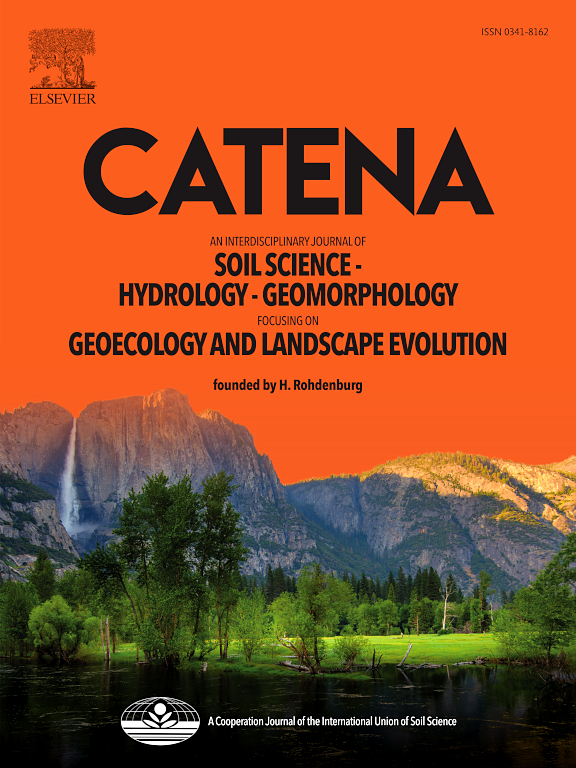Analysis of erosive processes and erosion rate by in-situ measurements and multi-temporal TLS surveys in a mountainous badland area, Vallcebre (Spain)
IF 5.4
1区 农林科学
Q1 GEOSCIENCES, MULTIDISCIPLINARY
引用次数: 0
Abstract
Badlands are highly erosive landforms characterized by dissected morphology, prevalent in regions with soft rocks and unconsolidated sediments, and are unsuitable for agriculture. Despite extensive research, understanding the dynamics of badlands remains limited, particularly in mountainous areas affected by freeze–thaw processes. This study aims to bridge this gap through a three-year investigation (November 2020 to November 2023), employing advanced geomatic techniques and a conventional approach. Focusing on two 8 m2 and 12.5 m2 badlands slopes facing north and south in the Upper Llobregat River Basin (Spain), the research aims to identify, characterize, and quantify erosive processes through Terrestrial Laser Scanning (TLS) and sediment trap measurements. While both methods effectively quantify sediment volumes, TLS proves more valuable for distinguishing processes and analysing slope morphological changes.
Over the three-year study period, 766 dm3 and 282 dm3 of soil were eroded from the south and north slopes respectively, resulting in annual erosion rates of 30000 Mg km−2 year−1 and 16500 Mg km−2 year−1. The erosion rates are relatively consistent with previous studies in these specific badlands, estimating erosion values ranging between 11000 Mg km−2 year−1 and 23000 Mg km−2 year−1. The findings reveal well-defined cyclic seasonal patterns: during autumn and winter, processes favouring the degradation of clay-rich slope material prevail, while in summer, soil detachment becomes predominant. Freeze-thaw cycles emerge as the most significant contributor to the degradation of clay-rich slope material, altering its internal structure and expanding its volume, swelling up to 5 cm in some areas. Conversely, during spring and summer, rainfall becomes the primary agent driving soil detachment and sediment transfer to sediment traps. Short-intense rainfalls, in particular, lead to rill and sheet erosion, identified as the primary erosive processes at the slope scale. Thus, this study highlights the critical roles of temperature and rainfall in the soil erosion process.

求助全文
约1分钟内获得全文
求助全文
来源期刊

Catena
环境科学-地球科学综合
CiteScore
10.50
自引率
9.70%
发文量
816
审稿时长
54 days
期刊介绍:
Catena publishes papers describing original field and laboratory investigations and reviews on geoecology and landscape evolution with emphasis on interdisciplinary aspects of soil science, hydrology and geomorphology. It aims to disseminate new knowledge and foster better understanding of the physical environment, of evolutionary sequences that have resulted in past and current landscapes, and of the natural processes that are likely to determine the fate of our terrestrial environment.
Papers within any one of the above topics are welcome provided they are of sufficiently wide interest and relevance.
 求助内容:
求助内容: 应助结果提醒方式:
应助结果提醒方式:


